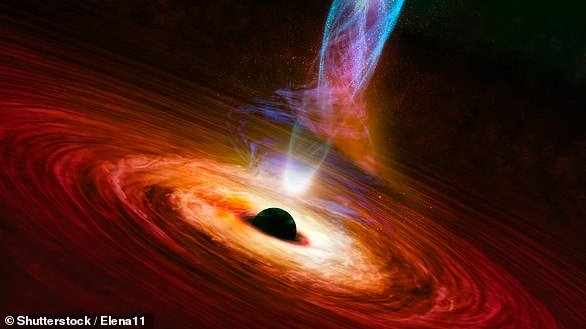The massive stellar black hole hiding in Earth’s backyard: Scientists discover a vast void in the Milky Way that’s 33 times as massive as the Sun
With their ability to swallow entire planets, black holes must be the most feared objects in the universe.
Sadly, scientists in France have found another one in our Milky Way – and they warn it’s astronomically ‘extremely’ close.
It’s called Gaia BH3 and is located 2,000 light-years away from Earth – or 11,000,000,000,000,000 miles – in the constellation Aquila.
This makes it the second-closest known black hole to Earth, after Gaia BH1, which is about 1,500 light-years away.
If this sounds alarming, Dr. Pasquale Panuzzo, an astronomer at the Paris Observatory, assures us that there is “no reason to be afraid.”
Known as an inspiration for science fiction films, black holes are regions of spacetime where gravity is so strong that not even light can get out. They act as intense sources of gravity that suck in surrounding matter such as dust and gas, as well as planets and even other black holes
“The black hole is close to us, on the scale of our Milky Way,” he told MailOnline.
“But it’s still 2,000 light-years away, 500 times farther than Proxima Centaury (the nearest star), and will never get much closer in the future.”
Black hole Gaia BH3 is not in its own solar system, but in a ‘binary system’ consisting of the black hole and a star, which is quite rare.
Interestingly, the star orbits the black hole, and this gives the star a strange ‘wobbling’ motion in its orbit.
The wobble was measured over several years with the European Space Agency’s Gaia space telescope, which was stationed about 1.5 million kilometers from Earth.
Additional data from other telescopes, including ESO’s Very Large Telescope in Chile, confirmed that the mass of this black hole is 33 times that of our Sun.
Dr. Panuzzo and colleagues say Gaia BH3 is a “stellar black hole,” putting it in the lowest classification when it comes to measuring black hole masses.
However, Gaia BH3 is still the second largest black hole in our galaxy, the Milky Way.
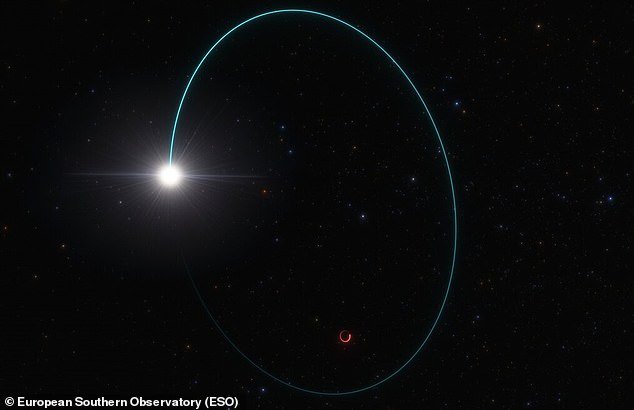
This black hole was noticed in data from the European Space Agency’s Gaia mission because it imposes a strange “wobbling” motion on the companion star orbiting it. Pictured is the star (blue) orbiting the black hole (red)
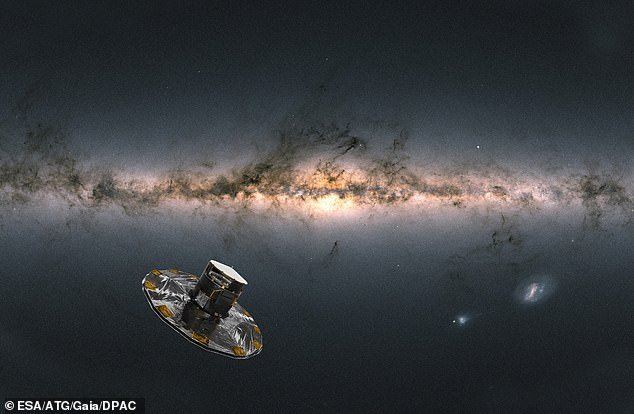
The European Space Agency’s Gaia Space Telescope (pictured here in space) is about 1.5 million km from Earth
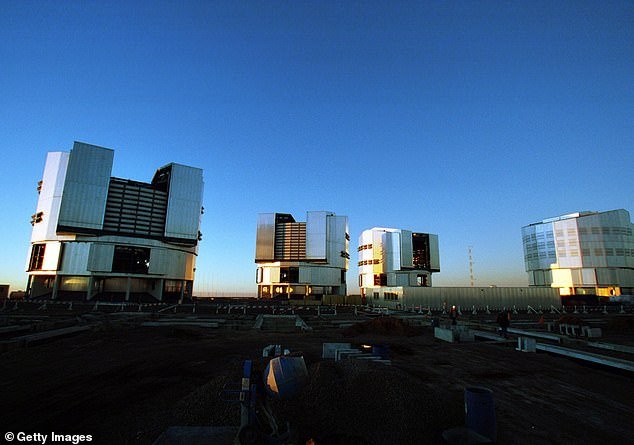
Pictured are the instruments that make up the Very Large Telescope in the remote, sparsely populated Atacama Desert of northern Chile
The largest black hole in the Milky Way is Sagittarius A*, at the center of the galaxy, with a solar mass of about 4 million – and spinning so fast that it has taken the shape of a football.
However, Sagittarius A* is 26,670 light-years away from Earth, so 13 times the distance of Gaia BH3.
The question of how exactly the newly found binary system was created – namely with a star orbiting a black hole – will be the subject of future research.
However, Dr. Panuzzo – who is the lead author of a study on the findings published today in Astronomy and astrophysics – has some theories.
“The classic scenario would be that the system consisted of a massive star (which collapsed to form the black hole) and a low-mass star (the one we see today),” he told MailOnline.
‘Another scenario is that the low-mass companion star was captured by the black hole after its birth.
“We have several indications that the latter scenario is more likely.”
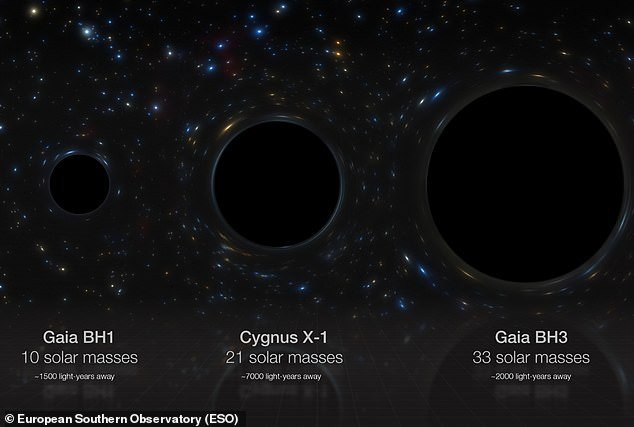
This image compares the new find with two smaller black holes in our Milky Way. Gaia BH1 is the closest black hole, but it has only ten times the mass of our Sun (ten solar masses). Meanwhile, Cygnus X-1 is twice as big, with a mass of 21 solar masses. Gaia BH3 has a massive mass of 33 solar masses, but is still completely eclipsed by Sagittarius A*, the largest black hole in our Milky Way (about 4 million solar masses)
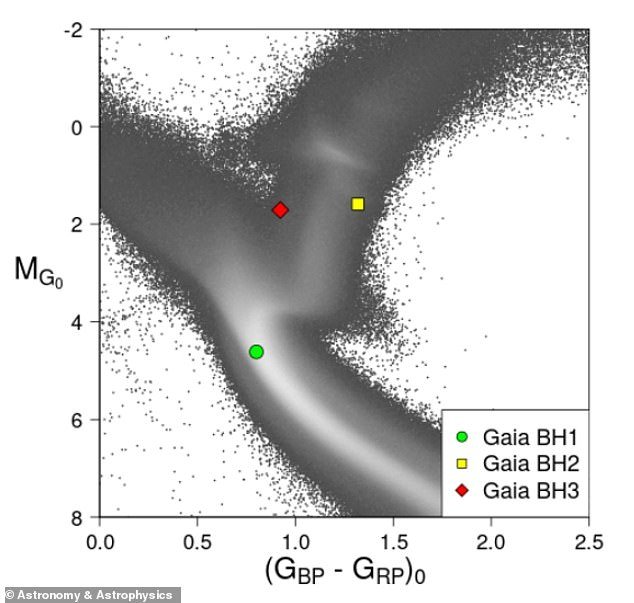
Until now, Gaia BH2 was the second-closest known black hole to Earth. Now we know that Gaia BH1 is the closest black hole, followed by Gaia BH3 (the new discovery) and then Gaia BH2
Known as the inspiration for science fiction films like ‘Event Horizon’, black holes are regions of spacetime where the pull of gravity is so strong that not even light can get out.
They act as intense sources of gravity that suck in surrounding matter such as dust and gas, as well as planets and even other black holes.
Earlier this year, another team of scientists revealed the brightest and hungriest black hole ever discovered.
Called J0529-4351, it has a mass roughly 17 billion times that of our solar system’s sun and consumes a star per day.
Because of their enormous gravity, black holes grow in mass by capturing nearby material, be it stars, planets, and even other black holes.
Another team recently unveiled an incredible map of 1.3 million supermassive black holes living at the centers of other galaxies in the universe.

